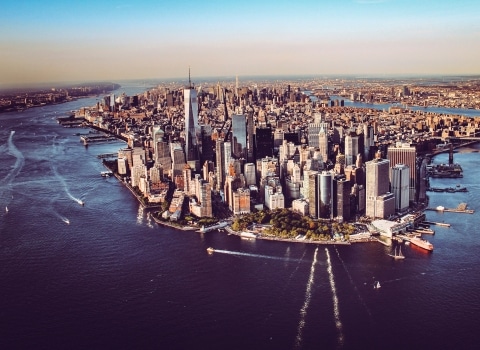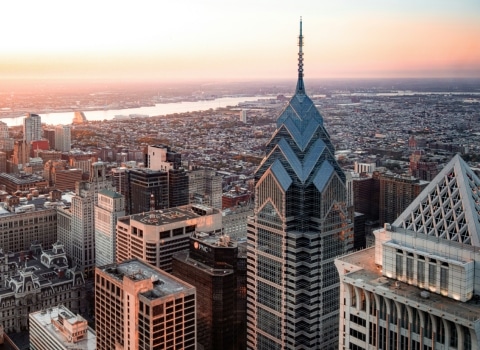Close to Montreal, Far from the City
There’s more green than one might expect on hikes near Montreal, just a short ride from the city. Not spectacular at first glance, maybe, but it grows on you. Forests that close in and then open wide. Paths that lead nowhere, then suddenly—light. The kind that filters through branches and reminds you the city is behind you, for a while at least.
For those after easy walks, it’s there. Flat stretches, quiet banks, a dog barking somewhere out of view. And for the ones chasing climbs and scrapes and sweat-soaked shirts, the Laurentians aren’t far. Trails that twist, rocks that test your balance, views that don’t try too hard but stay in your head long after.
Mountains, yes—but more than that. The St. Lawrence sits just to the south, always moving. Not dramatic, not loud. But it pulls you in. Forests thicken, then thin. Sounds disappear.
The list below, rough and subjective as any good list should be, gathers a handful of hikes close enough to Montreal to reach on impulse. Some advice too—what to bring, what not to forget, what time to leave if you want a bit of quiet before the crowd arrives.
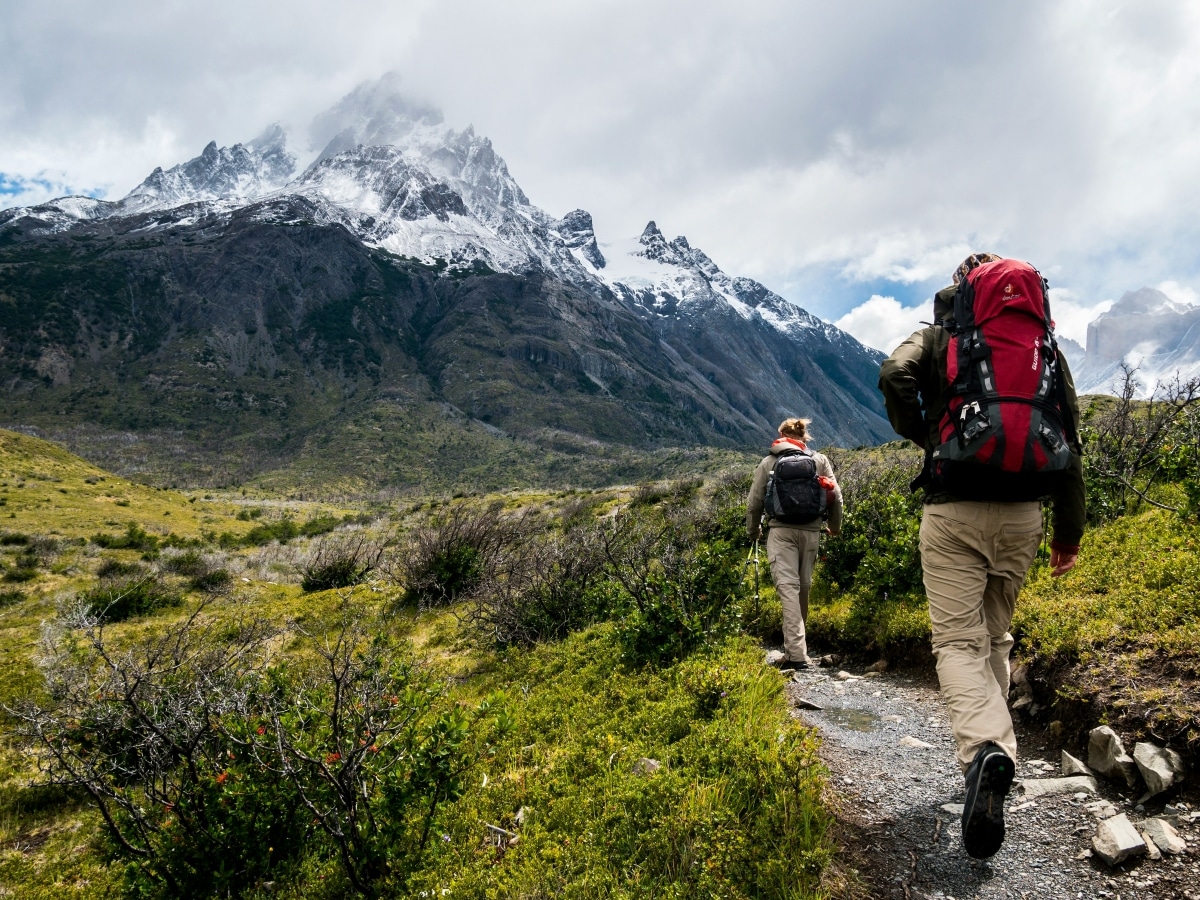
Top 10 hikes around Montreal
1. Mount Royal: A must-see in the heart of the city
No list of natural escapes in Montreal can leave out Mount Royal. Designed by Frederick Law Olmsted—the same mind behind New York’s Central Park—this urban sanctuary doesn’t just sit in the city, it shapes it. It’s where joggers pause mid-stride to watch the wind in the trees, and where the city skyline reveals itself after a climb that never quite feels like effort.
The forest trail leads up to the Kondiaronk Belvedere. People linger here. Some for the view of the St. Lawrence, others just to breathe. Squirrels scurry, birds call. Occasionally, a raccoon makes a shy appearance along the edge of the path.
History lingers here too: the Mount Royal Cross still watches over the city, and the bones of an old quarry sit quietly in the background. Come winter, snow smooths everything over. Snowshoe tracks weave through the woods, children race down slopes, skaters trace slow loops on Beaver Lake. At night, the trails glow softly. It’s cold, but no one seems to mind.
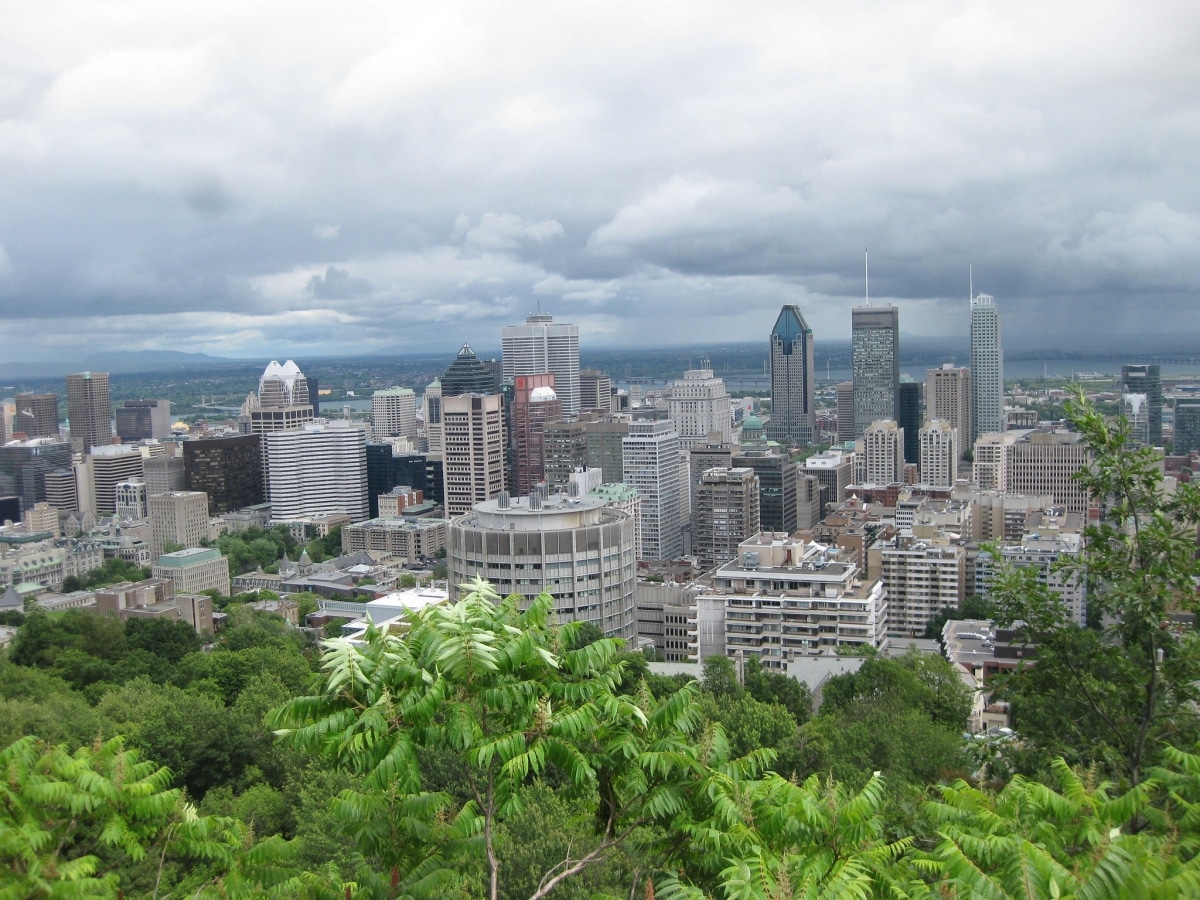
Practical Information :
- Distance: 8 km (full loop)
- Duration: 1h30 to 2h
- Difficulty: Easy
- Access: Mont-Royal metro or bus line 11
2. Mont-Saint-Hilaire: A preserved nature reserve
Roughly 40 kilometers from the city, Mont-Saint-Hilaire shifts the tone. It’s quieter, older-feeling somehow. As a designated UNESCO Biosphere Reserve, the area feels watched over—protected in a way most wild spaces aren’t anymore.
Over 600 plant species, a hundred types of birds. Peregrine falcons if you’re lucky. Owls too. White-tailed deer move cautiously through the underbrush. Sometimes they stop, stare back.
The trail to Dieppe Summit begins gently. Forest turns to wetland, then gives way to exposed rock. The Richelieu Valley comes into view—muted greens, distant rooftops, sometimes the city itself if the air is sharp and clear enough.
This isn’t a place that changes much, but each season colors it differently. Winter crunches underfoot, fall burns gold and red. Even the stillness feels varied, somehow.
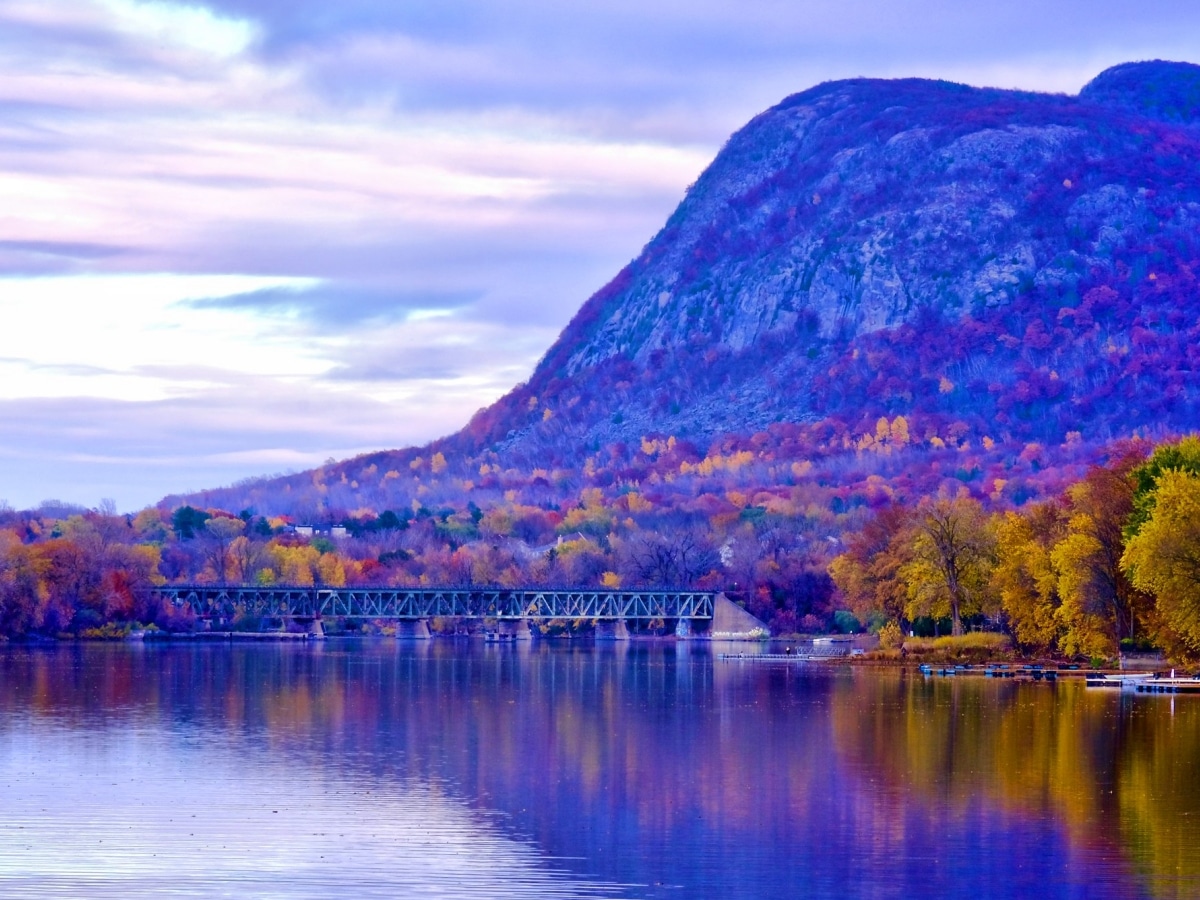
Practical Information :
- Distance: 8 to 10 km depending on the trail
- Duration: 2h30 to 4h
- Difficulty: Moderate
- Access: Suburban train Mont-Saint-Hilaire line + taxi
3. Oka National Park: Between forest and beach
Oka National Park sits at the edge of Lake of Two Mountains, known more for its sandy beach maybe—but the forest doesn’t wait long to change that impression.
The Calvaire d’Oka trail winds for 4.4 kilometers, a quiet route flanked by trees that lean in close. Then, stone chapels begin to appear—three of them, from the 18th century. Built by missionaries. Time-worn, but still standing. They mark the way to a high point above the lake, where the view spills open in every direction.
Snowshoeing here in winter rewrites the whole story. Everything slows. The forest feels heavier, hushed. If you bring a bike instead, the trails shift again—fluid, almost easy. And getting here doesn’t require a car. The Exo bus to Oka makes the journey just as simple, maybe even better.
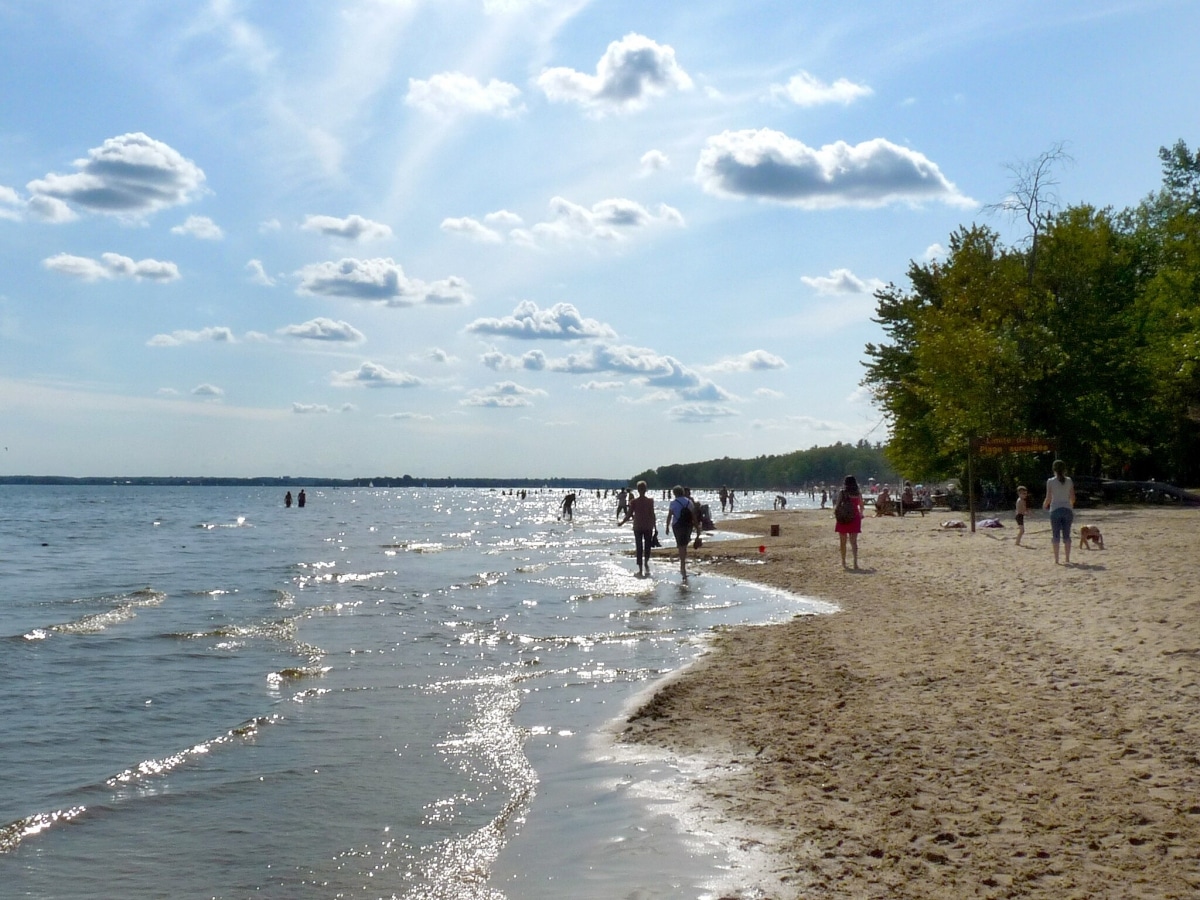
Practical Information :
- Distance: 6 to 11 km
- Duration: 2h to 3h
- Difficulty: Easy to intermediate
- Access: Exo bus towards Oka
4. Mont-Tremblant : The mountain of adventurers
Mont-Tremblant asks more. Not just time, but effort. It rewards both. The peaks stand higher, the trails longer. Some, like The Grand Brûlé or La Roche, carve their way through thick forest, past streams and jagged ridges that demand a certain attention.
Reaching the summit—yes, there’s a view. Lake Tremblant stretches wide beneath you. But more than that, there’s silence. The kind that sinks in.
For those who want to go deeper or simply not get lost, Montreal tour guides offer something useful: experience, patience, an understanding of what the trails don’t advertise.
Autumn makes this place glow. Reds, oranges, the whole palette you’d expect, though it still manages to surprise. In winter, the mountain shifts again. Snow covers everything. And with snowshoes or skis, the landscape opens up in a way that feels entirely new.
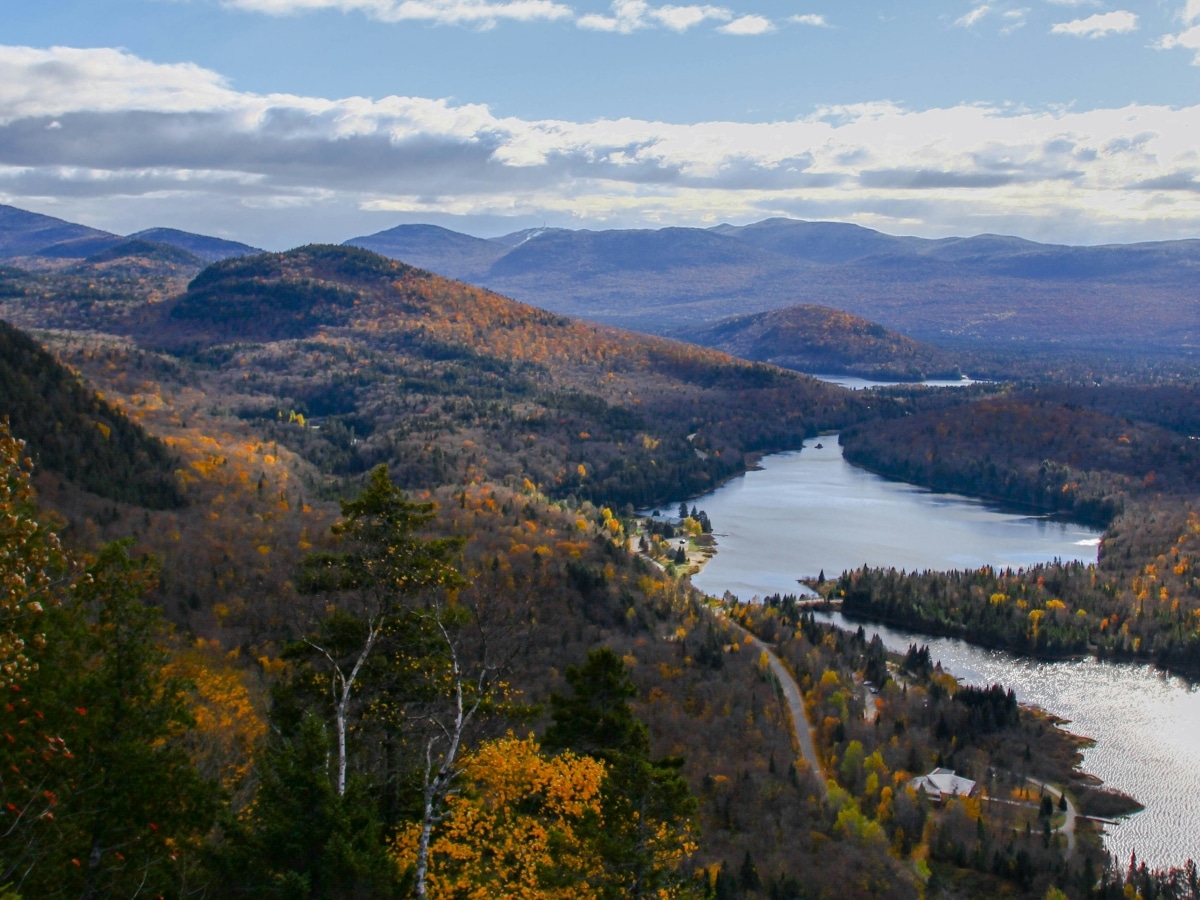
Practical Information :
- Distance: 6 to 11 km
- Duration: 3h to 5h
- Difficulty: Intermediate to difficult
- Access: Intercity bus to Mont-Tremblant
5. Coaticook Gorge Park: The vertiginous hike
It’s hard to ignore the presence of the longest pedestrian suspension bridge in the world—or close to it, depending on who’s counting. Stretching 169 meters across and hanging more than 50 above the carved-out gorge, the bridge isn’t just a feat of engineering. It sways slightly underfoot, just enough to remind you where you are: above it all, staring down at the Coaticook River curling through the rocks.
Past the bridge, the trail disappears into an old forest. Trees thick with moss, roots bulging from the earth. Somewhere between shade and silence, you catch glimpses—movement between branches. A deer startled, a fox vanishing. The birds are easier to spot, or at least to hear. Their sounds layer over each other, a kind of rhythm that guides you forward.
At night, it’s something else. Parts of the trail are lit, not harshly, more like a quiet glow, enough to see but not enough to explain. The forest feels deeper then. Slower. Some visitors stop walking altogether, just to let it settle in.
And winter—there’s that, too. The same gorges under snow. Same bridge, but different footing. Snowshoes crunching over frozen earth. The stillness sharper. Some prefer it that way. Less color, maybe, but more space to notice what’s left.
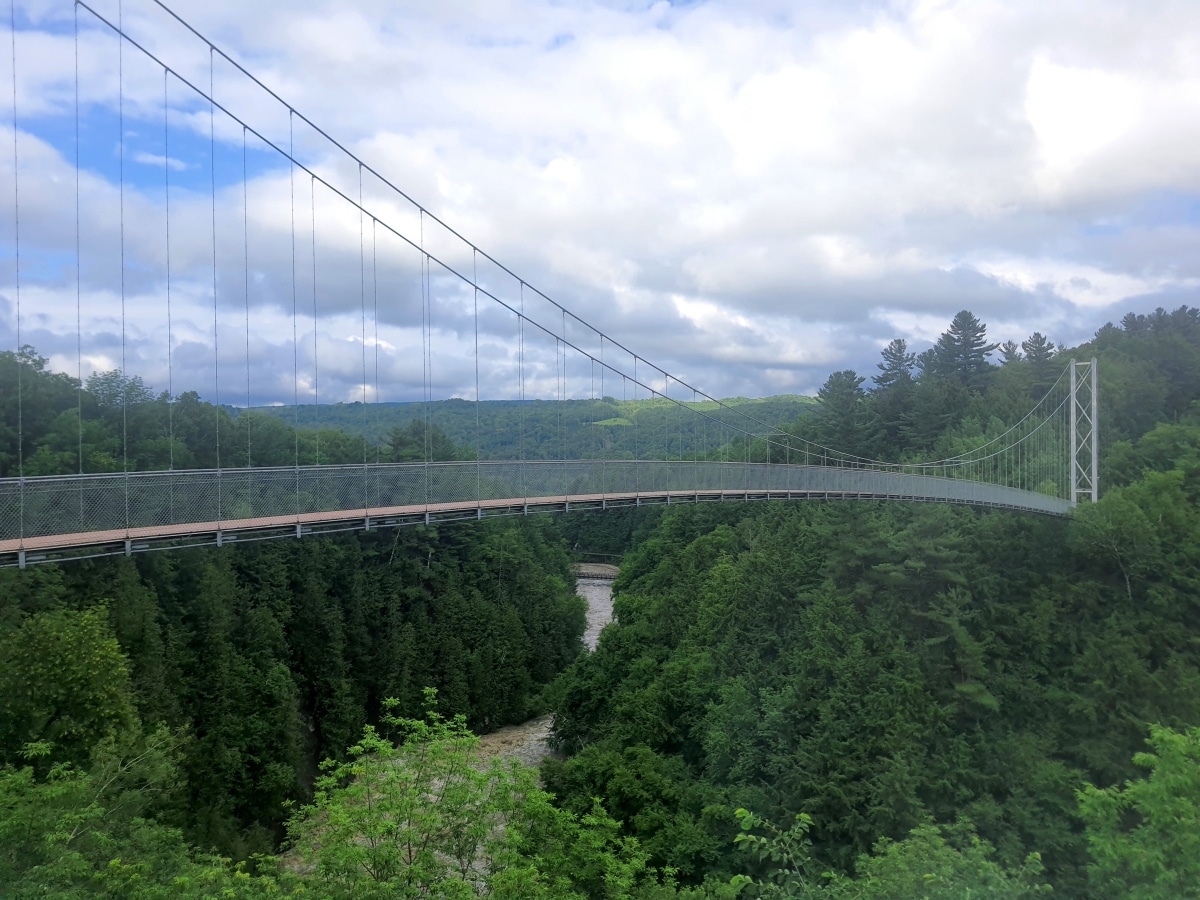
Practical Information :
- Distance: 10 km
- Duration: 3h
- Difficulty: Intermediate
- Access: Bus to Sherbrooke + taxi
6. Mont-Orford National Park
ome places don’t need much introduction. In the Eastern Townships, Mont-Orford National Park spreads across peaks and lakes, its dense forests pulling in hikers who return, season after season. Trails like Mont-Chauve and Pic de l’Ours don’t scream for attention—they earn it. The views? Wide open. Layered. Forest stretching one way, ridges cutting through the other.
Now and then, a white-tailed deer steps quietly out from the trees. Or a falcon circles above, just long enough to notice. The paths are clear, marked but not too tamed. Wooden rest spots appear where needed. Not polished—just enough space to stop, breathe, look out.
In winter, it shifts. Skis glide where boots once tread. The snow deepens, softens the edges. Still the same forest, but quieter. Every step through it feels different. Less rush, more presence.
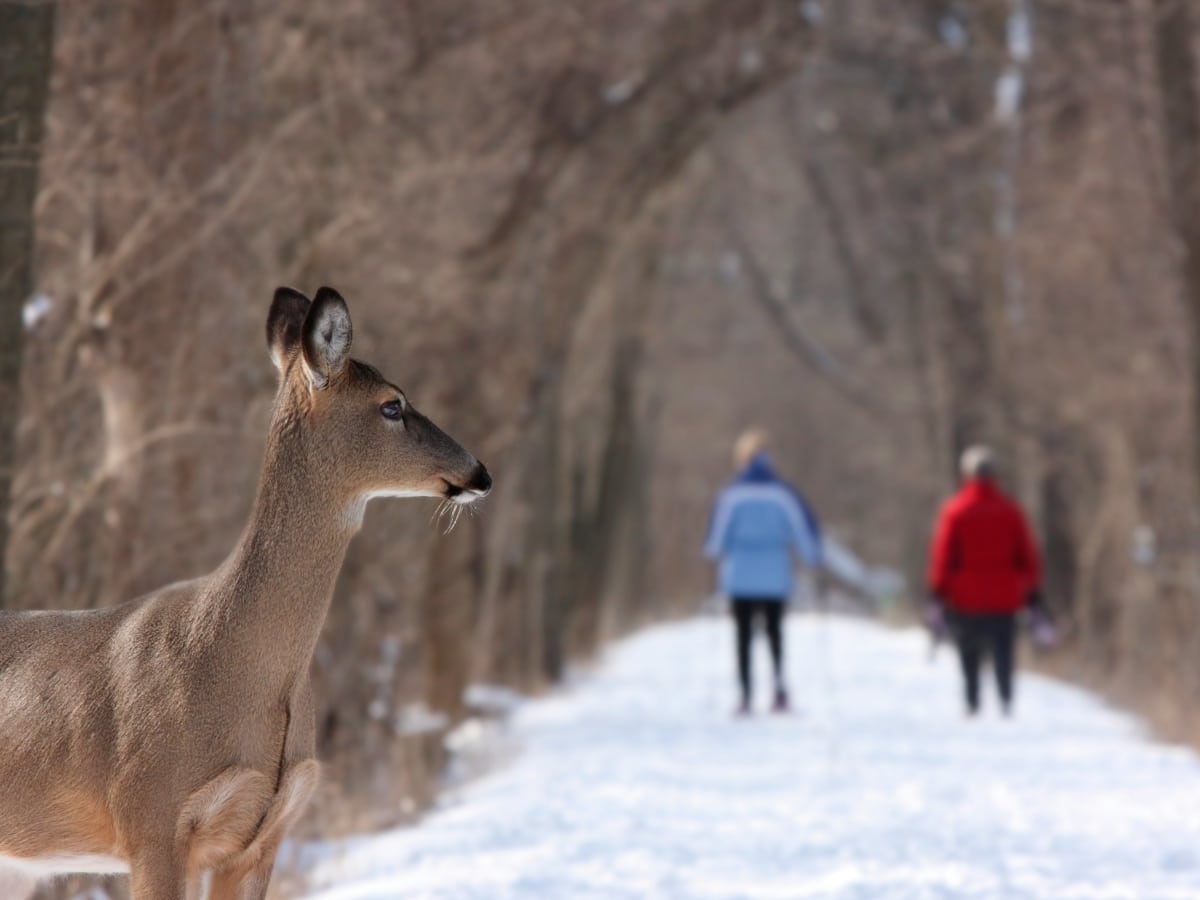
Practical Information :
- Distance: 6 to 12 km
- Duration: 2h30 to 5h
- Difficulty: Moderate to difficult
- Access: Bus to Magog + taxi
7. Mont-Saint-Bruno: An oasis near the city
Thirty minutes. That’s all it takes to leave the noise behind. Mont-Saint-Bruno is the kind of place people return to without thinking much about it. Close to Montreal, sure, but it doesn’t feel like it. There’s a calm here, not dramatic, just steady.
Maples, oaks, pines—they blur together across the trails. Five lakes break up the woods. Lac Seigneurial in particular draws the birds and those who like to watch them. The Grand-Duc Trail, only 3.5 km, keeps it simple—just a walk, no need for gear or goals. For others, the Montérégien Trail climbs higher, a good push with a clean view at the top.
Come winter, the story changes. Cross-country skiers carve lines through the trees. Snowshoers follow quieter paths. It’s a different kind of park then. Slower. Still just as close.
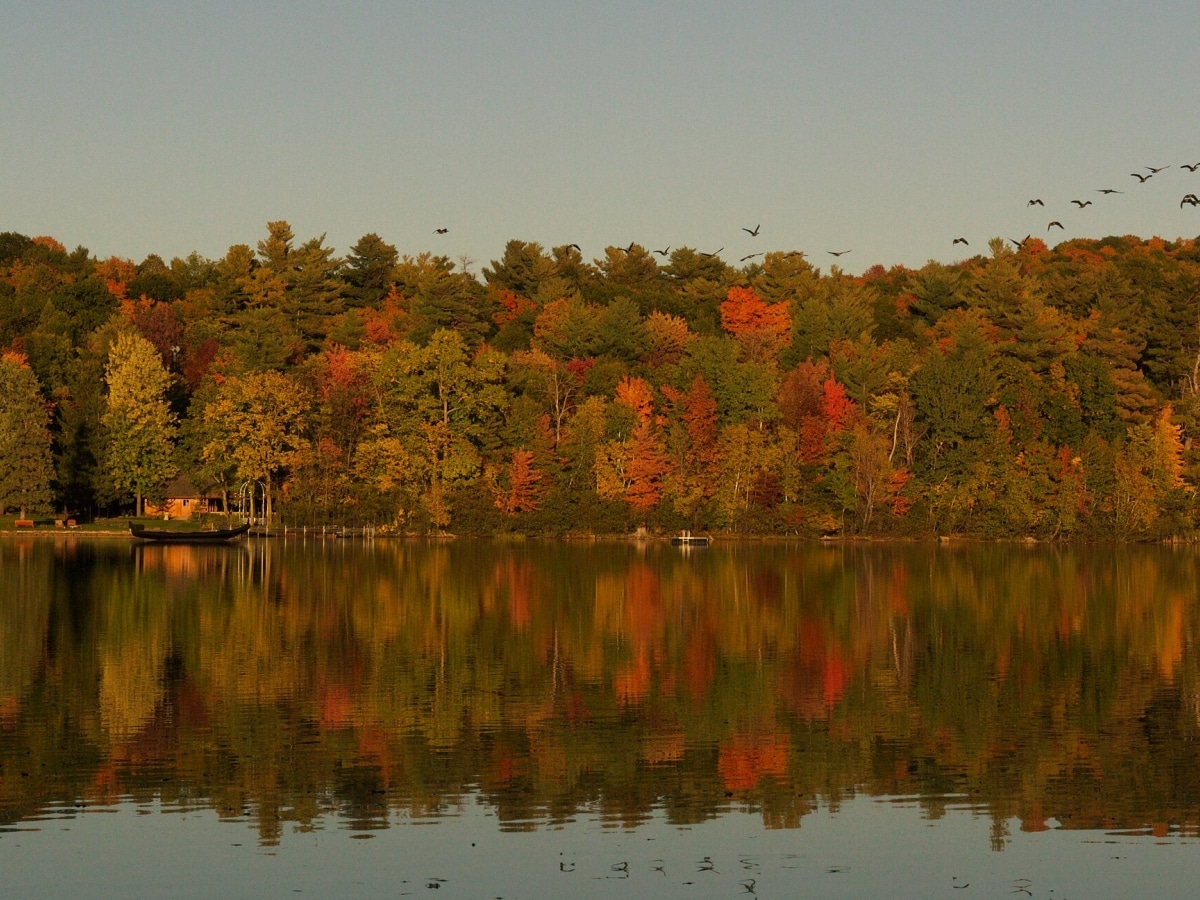
Practical Information :
- Distance: 7 km
- Duration: 2h
- Difficulty: Easy
- Access: RTL bus line 299
8. Mauricie Park: an immersion in nature
Big, wild, hard to pin down—Mauricie Park is one of those places that shifts as you move through it. Waterfalls don’t announce themselves; they’re just suddenly there. Cliffs, rivers, long trails threading between everything.
Wildlife keeps to its rhythm. Beavers in the streams, moose if you’re patient. Birds, always. The terrain changes—flat stretches beside lakes, then steep climbs that seem to appear without warning. No real need for a plan. Just walk.
Fall brings out the colors. Not subtle ones either—everything turns loud. Cameras click more often then. But the stillness, that stays. For those who don’t want to leave quickly, the campsites and picnic areas are quiet, nothing fancy. Just enough.
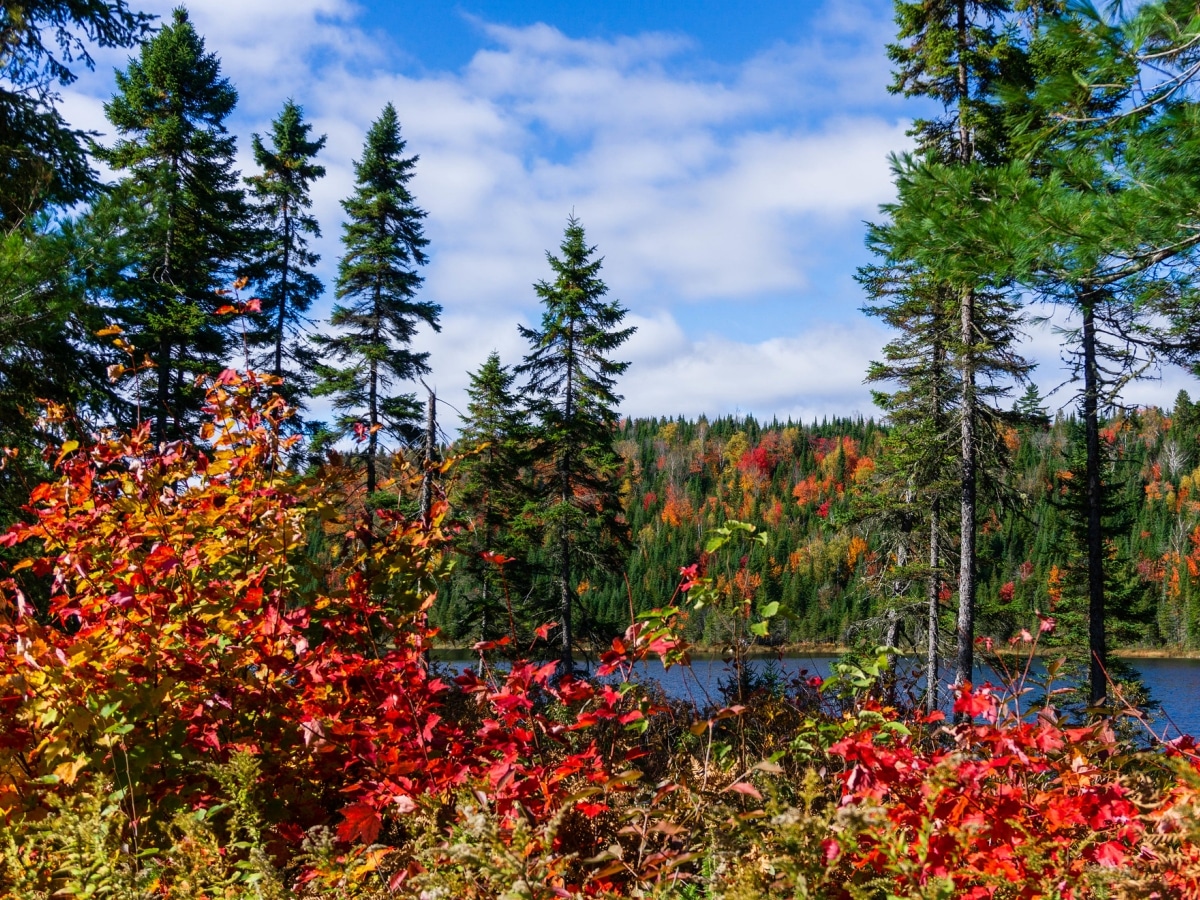
Practical Information :
- Distance: 10 to 15 km
- Duration: 4h to 6h
- Difficulty: Intermediate to difficult
- Access: Bus to Trois-Rivières + taxi
9. Mount Ham: a spectacular ascent
It doesn’t look like much from below. But Mount Ham, tucked into the Eastern Townships, holds more than it gives away at first glance. The trail doesn’t drag on—it climbs. Quick into the forest, roots underfoot, then up toward bare rock.
Some parts are steep, no use pretending otherwise. It pulls at your legs. But the summit—flat, open, all sky—makes you forget the last half hour. You turn and see the Saint-François Valley stretch out, layered in light. Sometimes, on a clear day, the Appalachians catch your eye way off in the distance.
Autumn transforms the slopes. Reds, oranges, uneven and brilliant. The kind of walk that sticks with you. Benches and lookout points give pause, literal and otherwise. In winter, snowshoes take over the trail. The climb doesn’t get easier, but it feels different. Softer, maybe. More solitary.
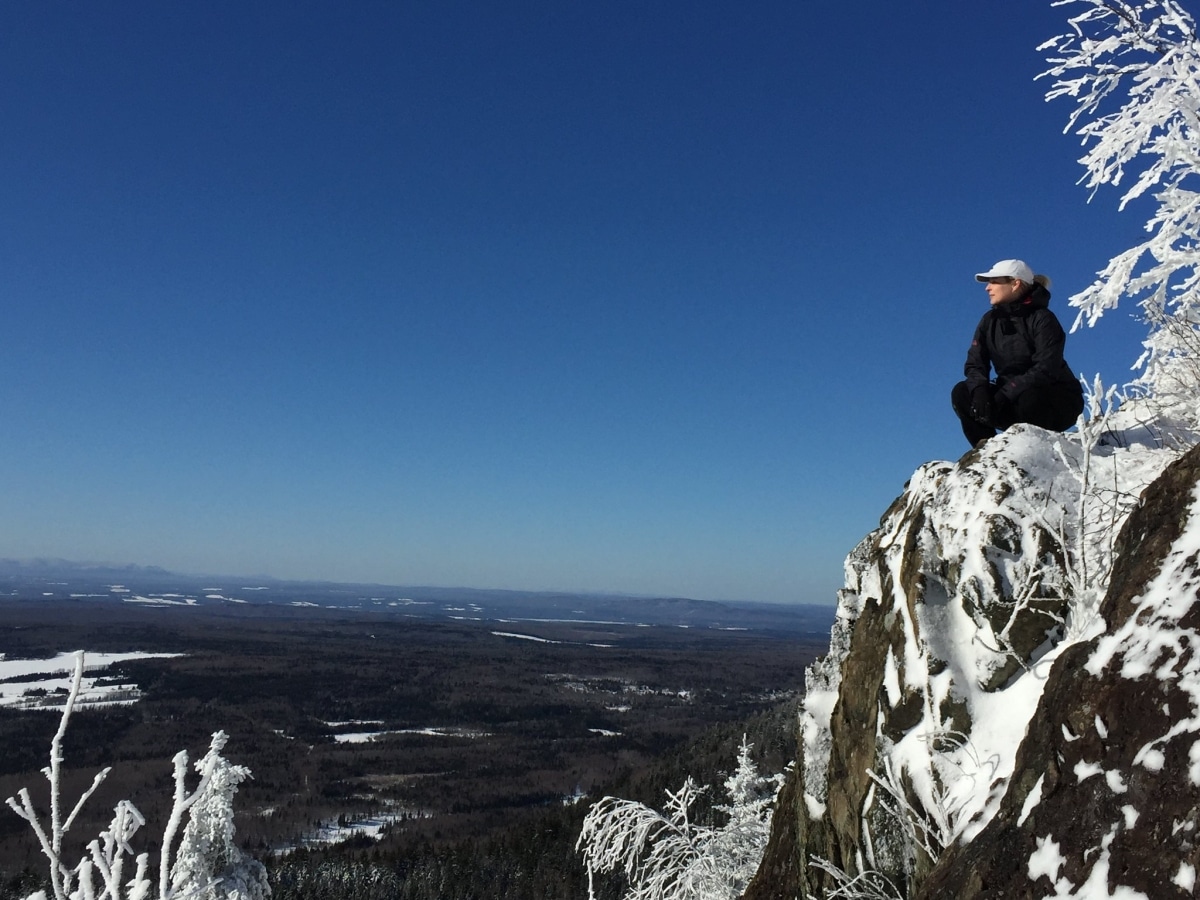
Practical Information :
- Distance: 6 km
- Duration: 2h30 to 4h
- Difficulty: Intermediate
- Access: Car only
10. The Charlevoix Caps Trail: A grandiose adventure
There’s something untamed about this one. The Charlevoix Caps Trail doesn’t try to ease you in. It starts strong—views of the St. Lawrence River, forest pushing up against the sky—and keeps going. Sharp ridges. Long valleys. No flatness to settle into.
The lookouts come often. Not marked by fences or benches. Just space—open, windy, wide. You catch glimpses of the islands, far out. The boreal forest hangs close, dense and deep in places where the path narrows.
Fall is generous here. Not just with color, but with clarity. And for those who want more than a day’s walk, there’s that option—multi-day hikes, wild camping, waking up in the middle of nowhere with the sound of wind or nothing at all. Not easy. But that’s part of the reason to go.
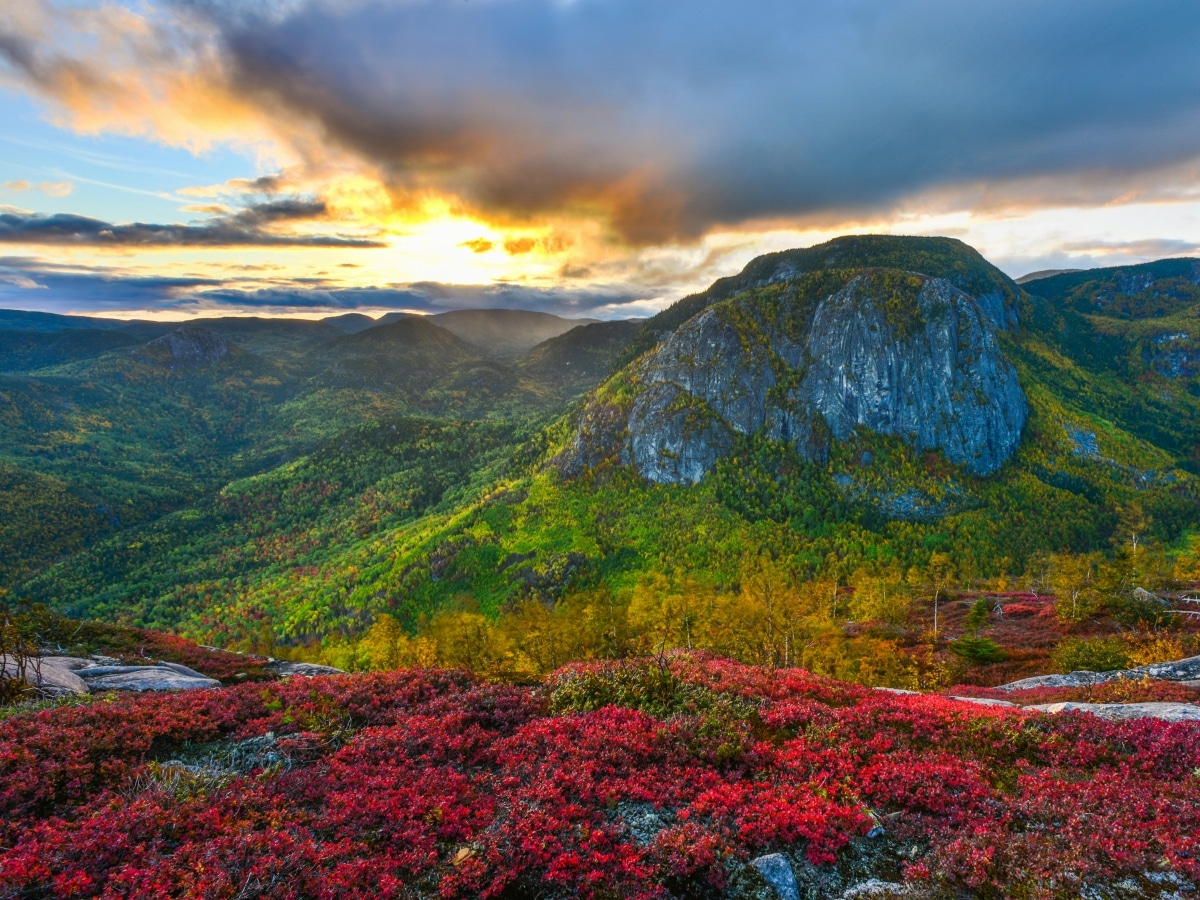
Practical Information :
- Distance: 12 to 50 km (depending on the chosen route)
- Duration: 5 hours to several days
- Difficulty: Intermediate to difficult
- Access: Car only
Ready to go? Montréal's hiking trails are waiting for you!
Whether it’s a quick forest stroll or a steep climb that calls, the areas around Montreal have something to offer—quiet woods, rocky lookouts, winding paths that shift with the seasons. From the shaded trails of Mont-Saint-Hilaire to the alpine feel of Mont-Tremblant, each route carries its own rhythm.
So, lace up those hiking boots, step outside the city, and let Quebec’s landscapes do the rest.

